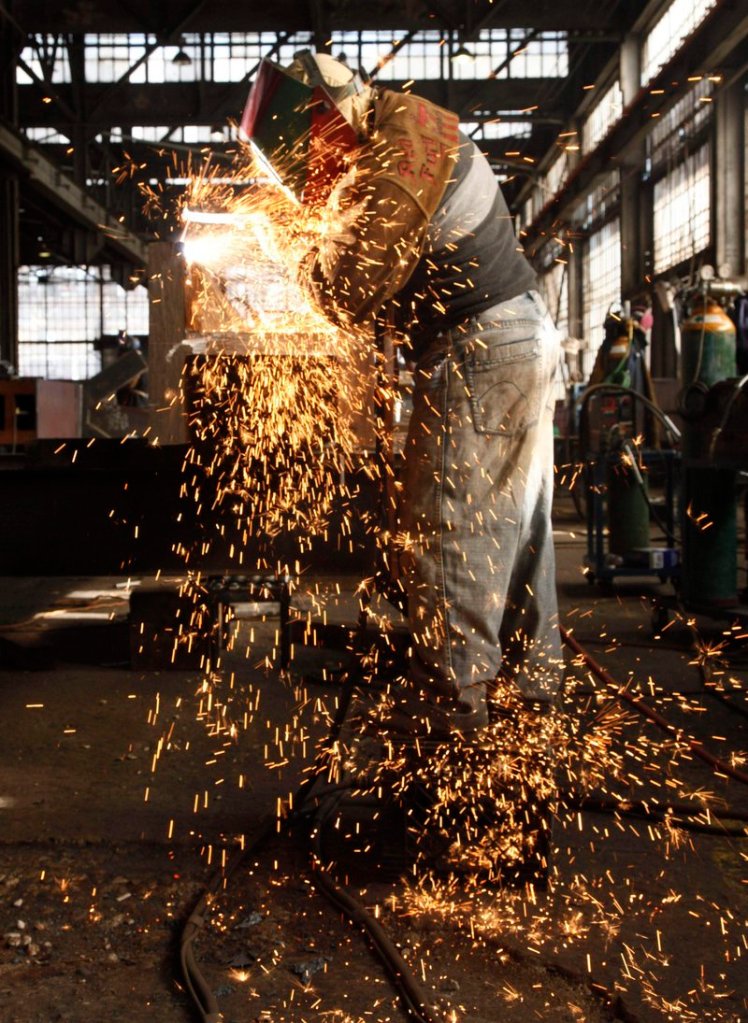WASHINGTON — The economy is being boosted by higher retail sales, stronger factory output and a rise in companies’ stockpiles.
That picture emerged from reports Friday pointing to an economy that’s improving modestly but steadily after the worst recession in decades. Yet the recovery needs stronger job creation, and it remains under pressure from fears that Europe’s debt crisis could slow the U.S. economy.
“The decent gains in payroll employment in recent months have improved the outlook for spending,” said Paul Dales, an economist at Capital Economics. But Dales said he expects a sub-par recovery because of high unemployment, tight credit and still-high debt loads.
Consumers drove retail sales up 0.4 percent last month. The gain was less than the 2.1 percent growth in March. But that surge was boosted by an early Easter holiday and auto incentives.
Shoppers are closely watched because their spending accounts for 70 percent of economic activity. It rose in the first three months of this year at the fastest pace in three years, according to the Commerce Department report.
Industrial production also climbed in April, posting an 0.8 percent gain. Factories, the biggest slice of industrial activity, ratcheted up output by a brisk 1 percent for a second straight month, the Federal Reserve report showed. Manufacturers have played a leading role in powering the recovery. They are boosting production because companies are starting to restore their depleted stockpiles of goods.
As evidence of that trend, business inventories grew for a third straight month in March, Commerce said in a separate report.
Inventories rose 0.4 percent. And total business sales gained 2.3 percent – the sixth straight increase and the best showing in four months.
Still, consumers and businesses appear less confident than in previous recoveries.
Complicating the outlook is the uncertainty in Europe. Stocks tumbled Friday as concerns grew that the deep spending cuts under Europe’s bailout plan will slow a global recovery.
Driving U.S. retail sales was a 6.9 percent rise in spending at hardware stores. That was nearly as strong as the March increase in that sector. A spree of home-buying this spring aided by a tax credit that expired last month likely led to more home improvements.
“That came after a 7.8 percent rise in March, perhaps suggesting there is some catch-up after the bad weather in February or maybe people are working on the homes recently purchased with the help of the tax credit,” Dales said.
Spending was also up at health and beauty shops and gasoline stations. Most other categories either showed declines or smaller increases than in March. Sales at department stores fell 1.5 percent, and the broader category of general merchandise stores, which covers big retailers such as Walmart and Target, reported a 0.4 percent decline.
Major retailers including Macy’s Inc., Nordstrom Inc., J.C. Penney Co. and Kohl’s Corp, reported strong first-quarter earnings this week that showed consumers are spending more on a variety of items. But retail executives offered cautious outlooks that fell short of rising Wall Street expectations.
“We are keeping in mind that the economy and the consumer environment remain unpredictable,” said Myron Ullman III, CEO of J.C. Penney. The retailer raised its full-year guidance Friday. But even the higher forecast and the second-quarter outlook were muted.
A diverse group of manufacturing sectors reported gains in production in April. They included metal products and machinery, appliances, furniture and carpeting, and chemicals and plastics.
“The manufacturing recovery is getting more diffuse, with 17 of 19 major sectors increasing production,” said David Huether, chief economist at the National Association of Manufacturers. “It looks more durable and deeper.”
In addition to the impact from an earlier-than-usual Easter, retailers contended with cold and rainy weather in much of the country in April, hurting sales of spring clothing. Demand at specialty clothing stores fell 1 percent in April after having jumped 2.6 percent in March.
Sales at appliance and electronics stores fell 0.4 percent in April, after an even bigger 1.3 percent drop in March.
The 0.4 percent rise in sales excluding autos followed a 1.2 percent jump in activity outside of autos in March.
Send questions/comments to the editors.



Success. Please wait for the page to reload. If the page does not reload within 5 seconds, please refresh the page.
Enter your email and password to access comments.
Hi, to comment on stories you must . This profile is in addition to your subscription and website login.
Already have a commenting profile? .
Invalid username/password.
Please check your email to confirm and complete your registration.
Only subscribers are eligible to post comments. Please subscribe or login first for digital access. Here’s why.
Use the form below to reset your password. When you've submitted your account email, we will send an email with a reset code.